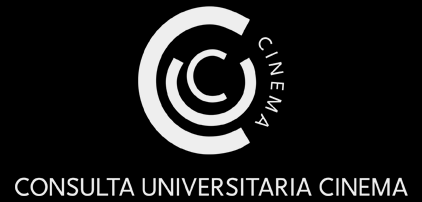To bring things spatially and humanly closer (Benjamin, 1939) is a social desire which the technical reproduction of art aims to satisfy. Media can thus be conceived as technical forms capable of modulating physical distance. Each process of remediation (Bolter and Grusin, 1999) is an attempt to listen to, see or experience something that is absent. Some media propose to bridge the distance between two or more remote subjects, while others mark distances, underlining the gap between here and elsewhere. Finally, others still – such as immersive technologies – promise to cancel distances and mediation itself.
The obligation of social distancing, imposed over the last few months, has subjected a large number of social, cultural, working and educational practices to digital remediation. During a pandemic, as well as in normal conditions, each practice is the result of mediations that follow or prescribe social norms. However, social and physical distancing has standardized these mediations, tying them to a series of forms of reproduction, remediation and renunciation. Digital media have therefore performed the functions of community glue as well as biological and social immunization (Esposito 2020). The tension between the trend towards the ubiquity of media experience and the construction of new barriers thus becomes a daily concern that deserves to be investigated. Opening a reflection on such issues requires jointly addressing the investigation of techniques, media and the forms of visual culture (Pinotti and Somaini 2016; Cometa 2016).
Art and aesthetic theory hold that the relationships between distance and proximity are regulated by formal dispositifs and compositional choices. While some research has studied the functions of the frame (Stoichita, 1999), others have focused on the effects of presence (Marin, 1994) that are put at stake in every representation. But screens (Carbone, 2016), and thus any technology of sensitivity (Montani, 2014) stimulate the spectator’s imagination, leading him to explore places near and far: they detach and connect, separate and join, screen and reveal.
The mutations of technique also contribute to structuring our experience. From the invention of writing to digital devices, technology has influenced the perception of space and time (Stiegler, 2018; Bachimont, 2010). While spatial distance is thus obviously at issue, temporal distance is also concerned by media techniques. The recent industrialization of traces (Jeanneret, 2020) can therefore be seen as a tendency to compress or decompress spatial as well as temporal distances (Treleani, 2017).
The process of remediation is therefore charged with environmental implications. The fluidity between current media helps to modulate spaces (Eugeni, 2015), and reconfigures the public or private environment in which the spectator or user finds himself. In this sense, any attempt to remediate distances can entail the mutation of the representation devices (Luigini 2019), and seems to coincide with a relocation of the experience (Casetti, 2015). But talking about remediation in the pandemic context also means dealing with the protocols of domestic confinement and with the practices of imposition and transgression of boundaries in many cases controlled by media devices. It is therefore interesting to reflect on digital culture (Doueihi, 2011) as a whole complex which structures our space according to different logics of authority (Vitali Rosati, 2018).
This issue of img journal aims to question the dialectic between distance and proximity in the configurations and reconfigurations made possible by new media from a long-term historical and theoretical perspective. As Carlo Ginzburg (2019) points out, within Western culture the term distance takes on both a concrete and a metaphorical meaning and its social, ethical and political implications need, today more than ever, to be investigated.
It will therefore first of all be a question of recounting, describing and analyzing the multiple forms of experimentation that followed the requirements of physical and social distancing, as well as modulation of proxemics, in the months of maximum spread of the pandemic. Contributors can explore the mutual adjustment between practices, constraints, hybridizations and braconnages (de Certeau, 1990) aimed at adjusting the restrictions of technical and social protocols. Secondly, this is the occasion to reflect, relying on an archaeological approach, on present and past experimentations that have considered distance and presence as a media effect; on the emotional component of distance; on social distancing as a biopolitical technology and thus on the implications in terms of community and immunity of visual culture (Zucconi, 2018); on the relations between artistic field and geographical space (Bruno, 2002); on media as transport through time and space (Somaini, Grignard, Rebecchi, 2020).
Interventions may include (not exhaustive list) artistic, media, communicative, pedagogical, psychological, social and cultural fields and come from different disciplines: philosophy, aesthetics, history, anthropology, sociology, education, psichology, semiotics, theory of arts, architecture, urban studies, media studies, performance studies, visual studies, studies on perception-action and emotions. In addition to the types of documents accepted (essays, reviews and position papers) creative and artistic presentations with theoretical background, are welcome.
How to send contributions
The abstract must be presented in English and, optionally, in mother language. The abstracts should contain:
. Title and subtitle
. Keywords (max. 5)
. Text (min. 400 words, max 800 words)
. Up to 2 images (max 1MB)
It is suggested to clarify the application field and the innovative elements of the text.
The paper presented must be original and in the case of more than one author to be explicitly, where possible, the contribution of each author.
The full article (min. 2000 words, max 4000 words) must be presented in English and, optionally, in mother language. Authors must be follow the journal editorial guidelines. Instructions for sending full text and pdf for the double-blind peer review, will be contained in the acceptance email.
The author must provide the proper linguistic editing.
Contribution must be submitted to the email submission@img-network.it with subject: “ISSUE03 – title of contribution”, where “title of contribution” means the title of your proposal.
Call for Essays





